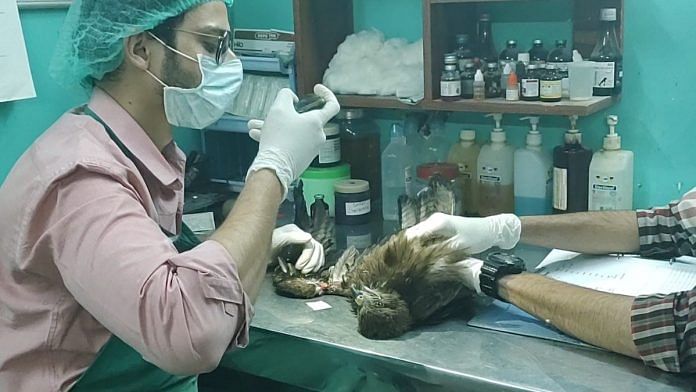Umar set out for work carrying old, flattened cardboard boxes with holes on all sides. On the way, he got a phone call telling him to quickly reach a bird hospital in Old Delhi. An hour later, he was carrying the same six cardboard boxes—except they were no longer empty. Squeaky whistle-like sounds of black kites occasionally cut through from inside.
Umar knew it was going to be a long day as he made it to Wildlife Rescue—a Delhi-based NGO founded by brothers Nadeem Shehzad and Mohammad Saud that has rescued, rehabilitated and treated 26,000 of the city’s birds of prey—black kites, barn owls, vultures, eagles, and falcons.
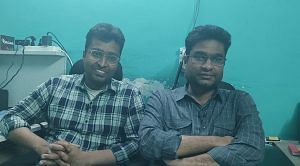
“There are not many places in Delhi that treat these carnivorous birds because of their eating habits and the stigma attached to them,” said Umar as he tried to calm a hatchling whose tiny claw had managed to pierce its battered cardboard enclosure.
The brothers’ untiring work in caring for Delhi’s injured birds has made its way into a critically acclaimed documentary, All That Breathes, which has swept all major awards across film festivals such as Sundance and Cannes. Directed by Shaunak Sen, the film has been shortlisted for the 95th Academy Awards in the ‘Best Documentary Feature’ category, to be presented on 12 March at the Dolby Theatre in Los Angeles.
Despite their work tugging at people’s heartstrings for years, Shehzad and Saud’s centre Wildlife Rescue has been floundering for funds.
The documentary film, shot and edited over three years, explores the plight resulting from the government’s rejection of Wildlife Rescue’s foreign funding request in 2019. However, their second attempt at submitting the FCRA (Foreign Contribution Regulation Act) application paid off in 2020 during the documentary’s shoot, allowing them to take donations from across the globe.
“The documentary has really helped in grabbing the attention of people abroad, including Indians living outside the country,” added Shehzad, highlighting the upsurge in foreign donations. He now hopes the effect will trickle down back home after the documentary is released in India. Currently streaming on HBO Max, All That Breathes will most likely be released in the country by March or April this year.
After the initial pit-stop at Charity Bird Hospital, located within Shri Digambar Jain Lal Mandir across Red Fort, 21-year-old Umar and his flock of birds travelled to bird hospitals in Shahdara, Geeta Colony, and Karol Bagh. As the day progressed and he headed for the rescue centre in Wazirabad, Umar barely had enough space to sit in the auto-rickshaw he had hired. Box after box piled, until it reached the unusually high number of 14.
Also read:
Rocky road to funding
The year was 1997. A young Saud, then 15 years old, routinely bunked school to volunteer at Sanjay Gandhi Animal Care Centre in Raja Garden. But it wasn’t until years later that his family realised what drove his actions—an intense urge to be around animals and birds.
Six years later, in 2003, Saud, accompanied by his elder brother Shehzad, took an injured black kite to the charitable Jain bird hospital in Old Delhi. But to their disbelief, they refused to admit the bird on the grounds that it ate meat. It was then — almost instantaneously — that the idea to start their own bird rescue centre germinated in the brothers’ minds. Within hours, the rooftop of their family home in Shahganj transformed into a shelter for birds of prey.
Soon, the private phone number they initially used as a helpline for their ad hoc rescue service travelled far and wide. “I received calls at odd hours, like 3 am, and callers often felt perplexed after learning I was asleep. They were expecting a customer service-like response,” said Shehzad, recalling the early days, when the siblings treated birds with the help of local veterinarians. With no formal training, they gradually learned to fix broken bones, perform intricate surgeries and stitch up wounds.
This was, at best, a side hustle until their passion for bird care started occupying more and more of their time and energy. Soon, the brothers were soap dispenser manufacturers by the day and bird rescuers by night. Their earnings from their family business would be poured into nursing the winged inhabitants of their shelter until they were forced to look outward for donations.
“People consider raptors ominous and ‘dirty’, so convincing anyone to donate was a hellish task,” said Shehzad, recounting the early days of 2010 and the subsequent years.
In one crucial scene in the 96-minute All That Breathes, Shehzad breaks important news as Saud tends to an ailing hatchling. “Our FCRA application got rejected,” he said, leaving his brother baffled.
Also read: India’s green energy goals have a serious problem – the Great Indian Bustard
Rescue, remedy, rehabilitation
Minutes before reaching the Wazirabad centre, Umar’s auto-rickshaw passes by a dumpsite with a bunch of kites hovering nearby. Black kites are a common sight over and around the junk piles in Delhi.
“These [black kites] are the ones which are eating away our filth. What will we do without them?”, the 21-year-old wonders out loud while preventing a cardboard box from tumbling onto the street.
The auto-rickshaw halts in front of the glass doors of an office in Wazirabad. Perhaps alerted by the vehicle’s sound, Salik Rehman, Saud and Shehzad’s cousin and employee at Wildlife Rescue, rushes to help Umar unload the boxes.
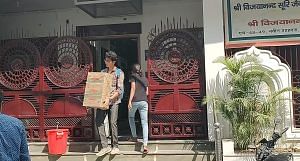
Tired of the arduous journey and blistering heat, the birds flutter inside the boxes, presumably conveying their displeasure at being caged for so long. Making their way through the reception area where 20-year-old Sara manages the desk, Umar and Salik enter the second room, where three hatchlings are seated inside a large tub, munching on a bowl of meat plated in front of them. Sensing company, the young birds—yet to take their first flight—make squeaky sounds.
The second room, much larger than the reception area, houses more birds—an owl nestling atop an iron almirah, a hatchling recovering from its injuries and a caged adult kite with an apparent neurological disorder.
Umar and Salik don their gloves and masks and return to work. Umar writes down the number of birds he brought in on a whiteboard updated daily, while Salik cleans one of the three rudimentary examination tables in the room. Then, one kite at a time, the two men transfer the birds from their boxes to crates, similar to those used in confectionary stores.
Salik, who has been working with Saud and Shehzad since 2017, clearly has more experience handling birds than Umar, who is still learning the ropes of the trade. As Salik sits in his chair, he signals Umar to hand over the first winged patient. The agitated bird tries to escape as Umar removes the cover from its crate, but the young man proves quicker. He grabs the kite from its claws and wings and places it gently inside a box perched on a weighing scale. Salik pins the bird as Umar records its weight on a form for winged patients.
After diagnosing that the bird had sustained an injury in its right wing from a sharp thread (manjha) used for kite flying, Salik’s voice drops. “The cut in its tendon is too deep. It will not be able to fly again,” he announces sadly.
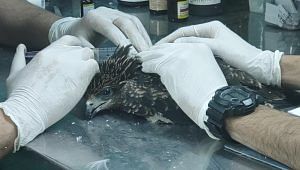
He pulls out an ointment and rubs it gently on the bird’s bruised wing. Umar hands over a tiny bottle, containing painkillers, and Salik pours a few drops into the bird’s beak, which calms it down. Another kite, which also sustained a cut on its wings, was fortunate to survive the deadly manjha. Salik applies a balm and wraps the wound with a cotton bandage as the kite coos. Umar taps its beak gently and then carefully places them back in their crates.
Each bird is examined, photographed, and assigned a case number along with documentation of its vitals. After the raptors are fed water, glucose, antibiotics, and painkillers based on their needs, they are assigned to their respective enclosures.
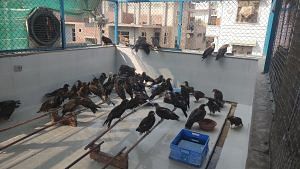
Adjacent to the clinic is Saud and Shehzad’s family home, where Saud shifted in 2017 while Shehzad still resides in Old Delhi with his family. The terrace has four bird enclosures. The biggest one—half open from above—is reserved for healthy birds, free to fly as per their will. The other three are for those still recovering. All enclosures are equipped with water and raw meat.
Saud’s 24×7 passion has consumed his family life, conversations and mind space.
At one point in the documentary, Saud’s wife Shabnam spoke about Delhi’s deteriorating air quality and its negative implications on health.
“Yes. Kites are falling off the sky because of the air pollution,” said Saud, nodding in response.
“I was talking about our son,” asserted his wife. Saud smiled sheepishly.
(Edited by Zoya Bhatti)



